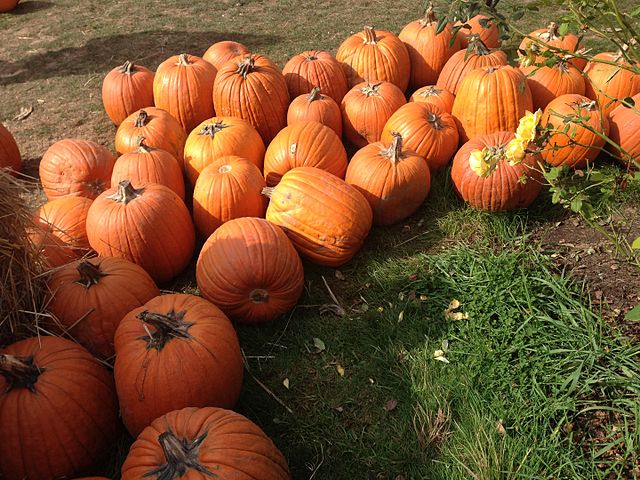Turkey, pumpkins, sweet potatoes, cranberries, apples, potatoes, green beans, and corn: Where did they originate and which countries grow ’em now? Gobble, gobble.
The United States is the world’s largest producer and exporter of turkey. Turkeys are an indigenous animal to North America (specifically forested regions of Mexico and the United States). These U.S. states are the top five producers within the country today:
- Minnesota
- North Carolina
- Arkansas
- Missouri
- Virginia
Pumpkins, squash, and gourds are a collective category covering a wide range of cultivated items. Gourds tend to be Old World in origin — even the pre-Columbian American varieties either migrated across the Bering Strait land bridge from Asian origins or floated across the Atlantic from Africa. “Pumpkins” (the British colonial-era name for a bright orange type of squash) and squash in general are all indigenous to North America. Pumpkins have been found in Mexico for millennia. Today, however, most of the world gets their pumpkins, squash, and gourds from major emerging market producers of the Old World. Notably, though, no African country cracks the top 5 list, despite the inclusion of gourds, but gourds are also very common across Asia:
- China
- India
- Russia
- Iran
- United States
Sweet potatoes (or yams) are sometimes substituted for pumpkin/squash at the Thanksgiving table or are sometimes included alongside them. Like ordinary potatoes, sweet potatoes were domesticated in South America. Remarkably, however, sweet potatoes made the jump to Polynesian islands in the Pacific well before the Western arrival in the New World, indicating strongly that Polynesian explorers landed in pre-Columbian South America and returned home with the crop. This early start in Polynesia helped sweet potato later become a major crop in nearby southeast Asia, including Indonesia. While China again tops the present-day producer list, this category is Africa’s moment to shine, as several African countries have incorporated yams firmly into their cuisine.
- China
- Tanzania
- Nigeria
- Uganda
- Indonesia
Cranberries remain strongly associated, in terms of production, with their natural homes in the United States and Canada. The early United States saw the conversion of the wild marsh crop (previously gathered by Native Americans and First Nations peoples) into a farmable wetland production, which began exporting cranberries all over the world, where they caught on. The Russian Empire, in particular, tried its own hand at cranberry production and that legacy can still be seen in the runners-up.
- United States
- Canada
- Belarus
- Azerbaijan
- Latvia
Apples are one of the few food items commonly associated with modern Thanksgiving that did not originate in the Americas at all, with the exception of crabapples (which are generally not consumed). Wild apples come from Central Asia (including what is now western China) and a wide number of wild species have been domesticated and bred down into various edible selections. China is far and away the largest producer of apples in the world. Distant second-place United States — “as American as apple pie” — has had edible, domesticated apples for less than four hundred years, unlike most of the rest of the modern Thanksgiving selection foods. In fact, apples were not grown in New England until several years after the first Thanksgiving.
- China
- United States
- Turkey
- Poland
- Italy
Potatoes have become a global staple over the past several hundred years, but they originated in South America. Today, wild species can be found from Chile to the United States, but they all came from a single strain in Peru or Bolivia, which is also where they were domesticated many thousands of years ago.
- China
- India
- Russia
- Ukraine
- United States
Green beans (known elsewhere as string beans or snap beans) are from Central and South America (domesticated in two separate locations) and were introduced to the rest of the world by Christopher Columbus on his second trip back from the Americas. Today the top producers are:
- United States
- France
- Morocco
- Philippines
- Mexico
The United States is also, unsurprisingly, the world’s largest producer and exporter of corn (maize), but 97% of U.S. corn production is not for direct human consumption. There are various animal or industrial uses for all that U.S. corn production not going to people. Mexico is a big producer of White Corn, particularly for use in tortillas and other Mexican cuisine. Maize was domesticated over several centuries of careful breeding in Mexico many thousands of years ago, with several varieties from a single strain, and became important to regional trade between indigenous groups. It remains North America’s largest grain crop, and human genetic modification is still a major influence to present day.
Statistical Data Sources: FAOSTAT (2013 top 5 producers data for each crop), AgMRC (Turkey and Corn)



